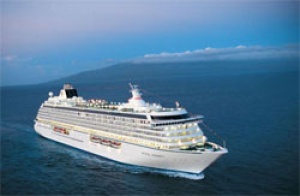Crystal Serenity begins month-long Northwest Passage journey

In a rare endeavour, Crystal Serenity has embarked on a 32-night journey through the Northwest Passage, the Arctic region north of Canada that was unattainable until just 100 years ago.
Following more than three years of planning and preparation, Crystal’s vessel welcomed nearly 1,000 intrepid guests aboard in Seward, Alaska.
“Every aspect of this voyage is literally unparalleled in the luxury cruise industry, and nearly the entire travel industry as well,” says Crystal president, Edie Rodriguez.
“It is a tremendous undertaking to embark on such a historic journey, but also an honour for us to be able to offer the world’s most discerning travellers the opportunity to experience a region of the world that so few others have or ever will.”
The voyage has not been without controversy, however, with environmental groups arguing the damage caused by large vessels passing through the Arctic will destroy the environment guests have come to see.
ADVERTISEMENT
Throughout the voyage, which will conclude in New York City on September 16th, Crystal Serenity will sail with additional crew, training and equipment in consideration of the unique operating conditions in the far north.
Two veteran Canadian ice pilots will be on board to advise the master of Crystal Serenity, captain Birger Vorland and his bridge team.
Earlier this year, the Captain and ice pilots attended an ice navigation simulator training in St John’s Newfoundland, and during a routine scheduled dry-dock in May, Crystal Serenity was outfitted with two ice searchlights, forward looking sonar, a thermal imaging camera and software to improve the ability to pick up small contacts on the radar such as small amounts of ice.
In addition, Crystal Serenity will be receiving constant ice condition updates form Canadian Ice Services that can be overlaid on its electronic navigation systems.
This technology is not typically found on cruise ships and represents the best possible preventive measures to detect any unforeseen anomalies along the ship’s path.

